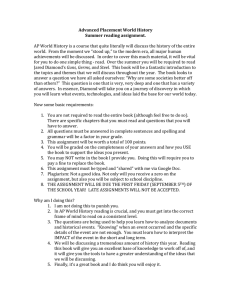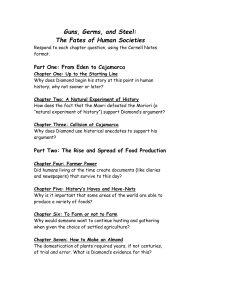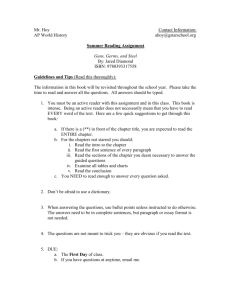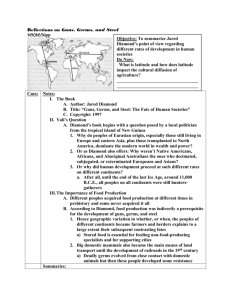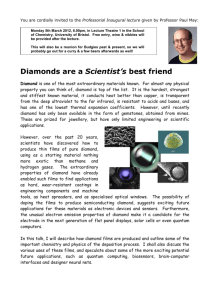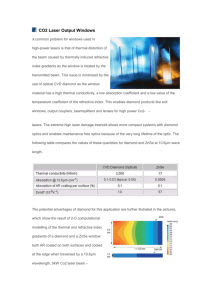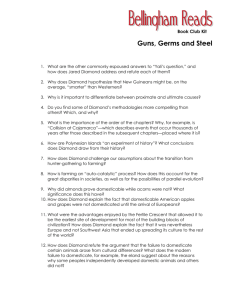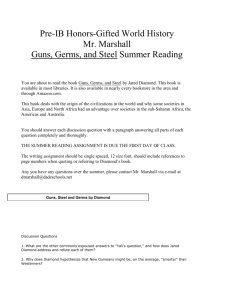Guns, Germs, and Steel Chapter Review Questions
advertisement
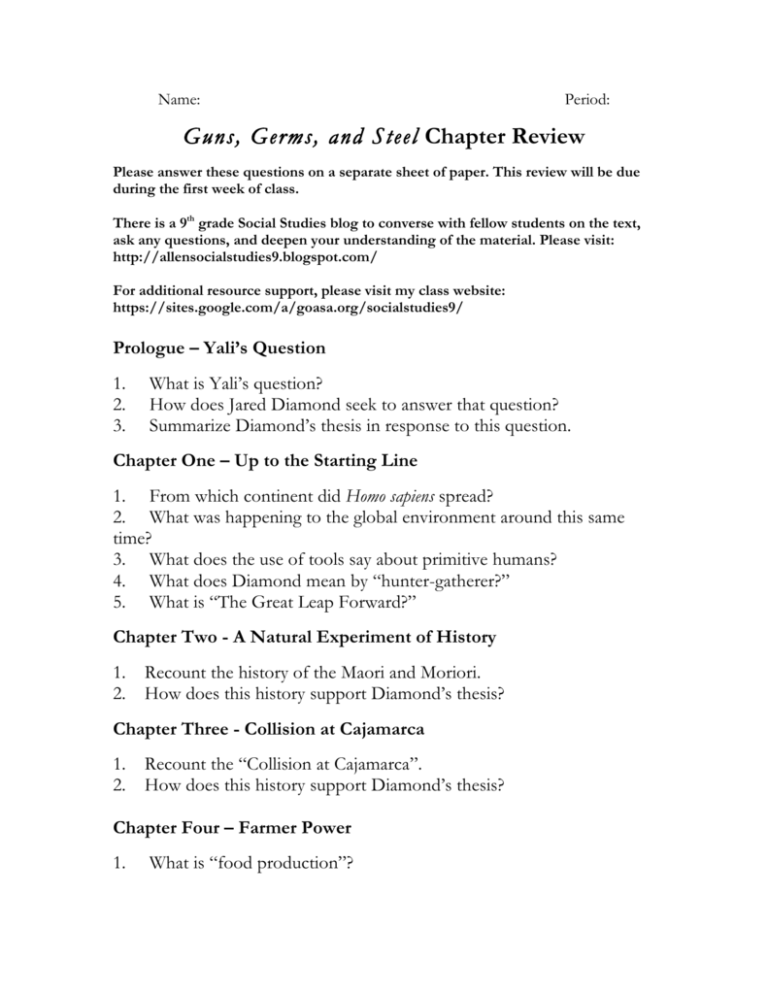
Name: Period: Guns, Germs, and Steel Chapter Review Please answer these questions on a separate sheet of paper. This review will be due during the first week of class. There is a 9th grade Social Studies blog to converse with fellow students on the text, ask any questions, and deepen your understanding of the material. Please visit: http://allensocialstudies9.blogspot.com/ For additional resource support, please visit my class website: https://sites.google.com/a/goasa.org/socialstudies9/ Prologue – Yali’s Question 1. 2. 3. What is Yali’s question? How does Jared Diamond seek to answer that question? Summarize Diamond’s thesis in response to this question. Chapter One – Up to the Starting Line 1. From which continent did Homo sapiens spread? 2. What was happening to the global environment around this same time? 3. What does the use of tools say about primitive humans? 4. What does Diamond mean by “hunter-gatherer?” 5. What is “The Great Leap Forward?” Chapter Two - A Natural Experiment of History 1. 2. Recount the history of the Maori and Moriori. How does this history support Diamond’s thesis? Chapter Three - Collision at Cajamarca 1. 2. Recount the “Collision at Cajamarca”. How does this history support Diamond’s thesis? Chapter Four – Farmer Power 1. What is “food production”? 2. What advantages did food production give to hunter-gatherer societies? 3. Food production leads to dense human populations. Dense human populations lead to... 4. Summarize “The Underlying Theme of History,” and recreate it in your own visual form. Chapter Five – History’s Haves and Have-nots 1. Where are the six definite sites of prehistoric agriculture? 2. What about the natural environments of these places made it possible for agriculture? 3. How did the idea of agriculture spread from these original sites? Chapter Six - To Farm or Not to Farm 1. What environmental factors lead societies to convert from huntergatherer to agricultural? 2. What benefits come from an agricultural lifestyle? 3. What disadvantages come from an agricultural lifestyle? Chapter Nine – Zebras, Unhappy Marriages, and the Anna Karenina Principle 1. Why were certain animals easier to domesticate than others? 2. What are the 14 large domesticated animals, and where are they found? 3. What are the biological requirements for domestication? 4. How did these factors affect the developing societies around the globe? Chapter Ten - Spacious Skies and Titled Axis 1. To what is the east-west axis referring? 2. Why is it easier for people, ideas, and goods to spread across an eastwest axis rather than a north-south axis? Chapter Eleven - The Lethal Gift of Livestock 1. 2. Where do the majority of human diseases come from? Why do humans live in close proximity to animal populations? 3. How did rise of germs lead to Eurasian success in global domination? Chapter Twelve - Blueprints and Borrowed Letters 1. What is the oldest known form of writing and where did it develop? 2. Why did it develop? What was it used for? 3. Why does writing exist in societies with complex stratification and not others? 4. How is writing a form of technology? Chapter Thirteen – Necessity’s Mother 1. What inspires technological innovation? 2. How is this epitomized in the example of the Phaistos disk? 3. How does food production benefit from technological advancements? 4. Why were there fewer drastic technological inventions in the New World than Eurasia? Chapter Fourteen - From Egalitarianism to Kleptocracy 1. Define the following types of society: band, tribe, chiefdom, and state. 2. What is the difference between an egalitarian society and a kleptocratic society? 3. What is complex social stratification/hierarchy? How is it linked to dense human population? 4. According to Diamond, what is the role of religion in society? Epilogue – The Future of Human History as a Science 1. Diamond’s answer to Yali’s question is that accidents of geography and environment brought about the inequality in world powers. What are these “accidents” that Diamond is referring to? 2. Having read the book, what would you say is Diamond’s personal bias? In your own words... Summarize the overall theme of Guns, Germs, and Steel.
